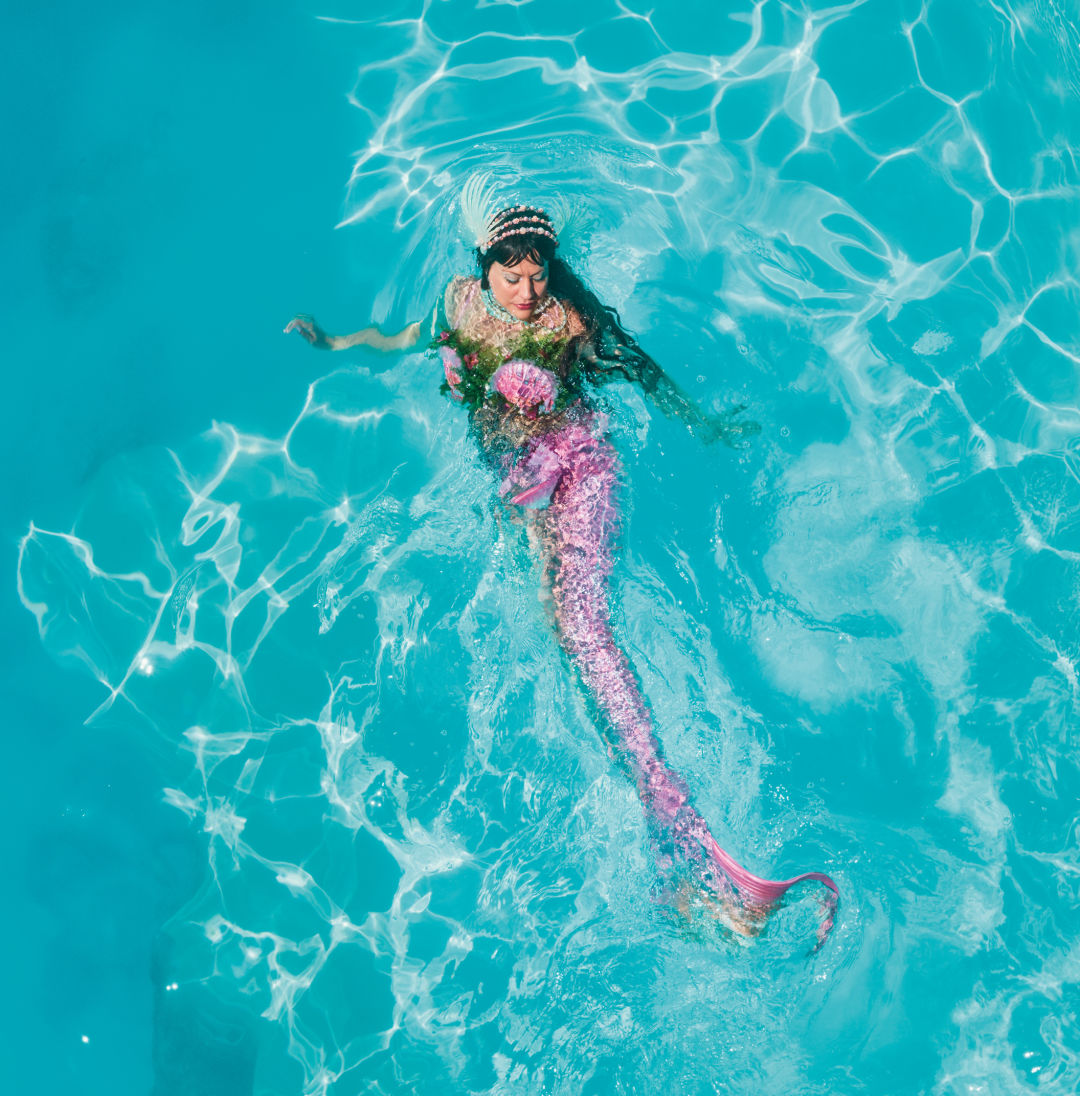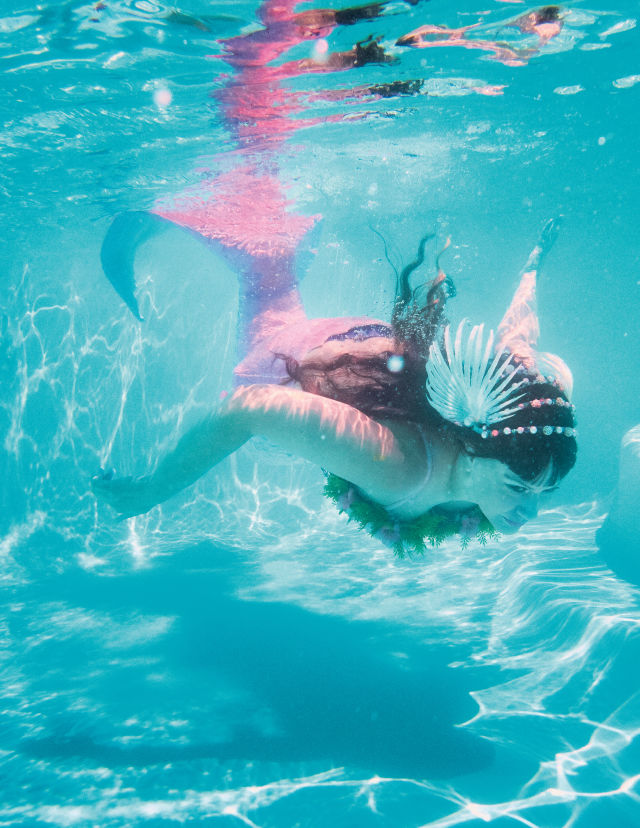Una the Mermaid Is Portland's Most Magical Sea Nymph

"The Northwest is a challenge for mermaids. We have a very limited season."
Image: Andy Batt
Before Una the Mermaid was a mermaid, she was a pirate. But after years of deck-swabbing and grog-swilling reenactments at Renaissance fairs, she decided she’d had enough of that life—so, the story goes, she dove off the ship and into the sea. These days, she performs on the faerie festival circuit (which is a thing) and at lagoon parties (which are a thing) with her traveling “Fanta-Sea Cove” and stages spontaneous fountain raids around Portland. (When not mermaiding, Una works in education and restorative justice at a prison, and is pursuing a PhD in transformative psychology.) She’s also the organizer of the Portlandia Mermaid Parade, which celebrates its third year on July 28, 2018, with water nymphs conveyed along Gov. Tom McCall Waterfront Park in wheelchairs and wagons by their “mertenders” (also a thing!).
I was born in Hawaii, so I am a mermaid. I swam the oceans with fish. I grew up with Hawaiian legends of creation and ocean myths. Here, even though we have the coast, it’s not the same.
My husband and I had been pirate reenactors for some time. I honestly got tired of it. As an advocate for women, role-playing characters that are notoriously misogynistic and violent towards women—and then having that carry out [for real] in the reenactment community—was something I started to challenge. Becoming a mother, I realized there wasn’t a space for me to celebrate my feminine aspects and to honor my daughter. What did I want her to be around?
I went to a festival and saw a woman with a tail in a tiny hot tub. I was an adult, but I reverted to 5 years old and was like, “Oh my god, a real mermaid.” She was just wearing a simple shell top and a mermaid tail she had made, but there was this realism to it. The following year, I started in a kiddie pool attached to my husband’s pirate camp. My daughter and I made our first tails. It was amazing.
Mermaids socialize in pods, like whales. [My] pod in Portland—there’s easily 20 or 25 of us. There’s a particular demographic that tends to gravitate towards the mermaid archetype: usually survivors of trauma who identify with emotion and water, and are looking for a welcoming place that’s inclusive of body, age, race, and ethnicity. It’s really about tapping into your inner child and expressing magic.

Image: Andy Batt
Sirens are also mermaids, but not family-friendly, kid-friendly mers. They’re more R-rated. The girlfriends of the pirates. Sometimes it’s a nickname we give to people who are not as embracing of the mermaid ideology of niceness and compassion and gentleness.
There’s actually quite an extensive support network for mermaids. A national database called the MerNetwork is designed for mermaids to connect and share events, but also has lots of tutorials on hair, makeup, and costuming.
The Northwest is a challenge for mermaids. We have a very limited season. We do fountain raids where we just show up and play with the kids and families. As mermaids, we always travel with gifts, so we [have] shells to pass out and stories to tell, songs to sing ... very Neverland-like.
I’m really into upcycling. For my first tail, I took two swim fins and stitched them together with fishing line.... It was a beautiful tail—holographic silver and very iridescent. I’m about 20 tails on from that now. I recently acquired a full silicone tail, which is oceangoing. They start at $600 and go up to $10,000. Mine was custom-made by artists in Florida. It takes about 25 minutes to get into, and I need help. It’s really difficult to be a mermaid without what we call a mertender. I rely very heavily on my husband, who is my lifelong mertender at this point. He’s a pirate, so he doesn’t mind so much.
Anybody can do this. Anyone can be a mermaid. You do not have to look like Ariel. It doesn’t matter. We have merfolk of all ages and body types and genders and sexual identities. It’s hard not to feel beautiful when you’re a mermaid.




